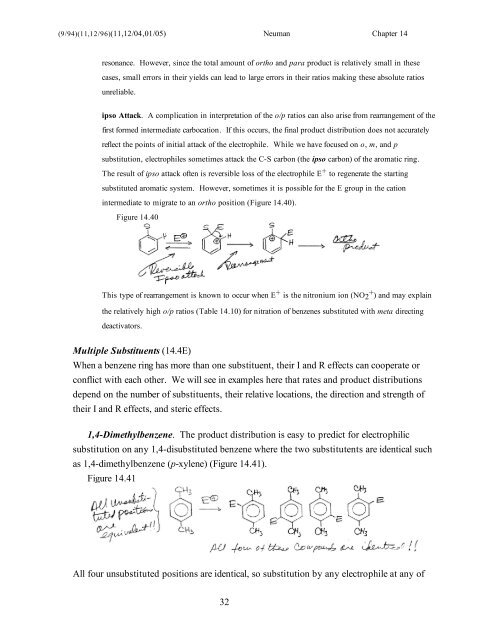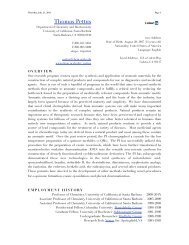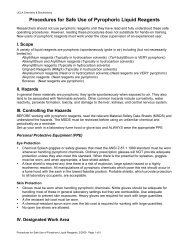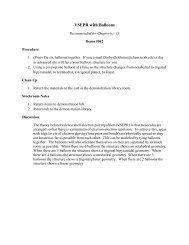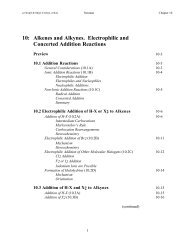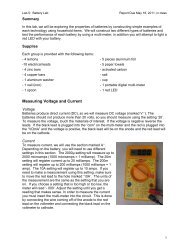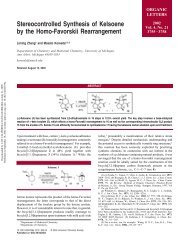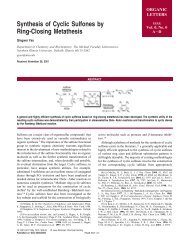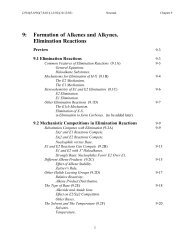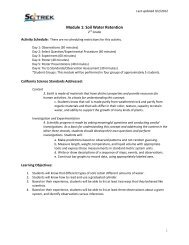14: Substituent Effects
14: Substituent Effects
14: Substituent Effects
Create successful ePaper yourself
Turn your PDF publications into a flip-book with our unique Google optimized e-Paper software.
(9/94)(11,12/96)(11,12/04,01/05) Neuman Chapter <strong>14</strong><br />
resonance. However, since the total amount of ortho and para product is relatively small in these<br />
cases, small errors in their yields can lead to large errors in their ratios making these absolute ratios<br />
unreliable.<br />
ipso Attack. A complication in interpretation of the o/p ratios can also arise from rearrangement of the<br />
first formed intermediate carbocation. If this occurs, the final product distribution does not accurately<br />
reflect the points of initial attack of the electrophile. While we have focused on o, m, and p<br />
substitution, electrophiles sometimes attack the C-S carbon (the ipso carbon) of the aromatic ring.<br />
The result of ipso attack often is reversible loss of the electrophile E + to regenerate the starting<br />
substituted aromatic system. However, sometimes it is possible for the E group in the cation<br />
intermediate to migrate to an ortho position (Figure <strong>14</strong>.40).<br />
Figure <strong>14</strong>.40<br />
This type of rearrangement is known to occur when E + is the nitronium ion (NO2 + ) and may explain<br />
the relatively high o/p ratios (Table <strong>14</strong>.10) for nitration of benzenes substituted with meta directing<br />
deactivators.<br />
Multiple <strong>Substituent</strong>s (<strong>14</strong>.4E)<br />
When a benzene ring has more than one substituent, their I and R effects can cooperate or<br />
conflict with each other. We will see in examples here that rates and product distributions<br />
depend on the number of substituents, their relative locations, the direction and strength of<br />
their I and R effects, and steric effects.<br />
1,4-Dimethylbenzene. The product distribution is easy to predict for electrophilic<br />
substitution on any 1,4-disubstituted benzene where the two substitutents are identical such<br />
as 1,4-dimethylbenzene (p-xylene) (Figure <strong>14</strong>.41).<br />
Figure <strong>14</strong>.41<br />
All four unsubstituted positions are identical, so substitution by any electrophile at any of<br />
32


